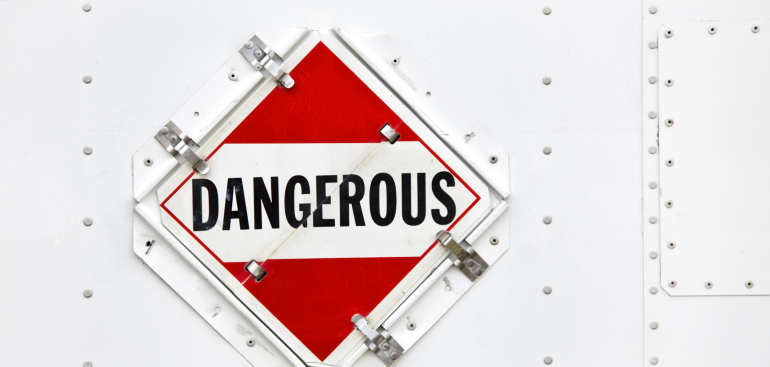The term “dangerous goods” or “hazardous goods” was coined for a reason.
These products must be handled with extreme caution due to their hazardous nature, and any misdeclaration, miscommunication, or improper documentation could result in serious consequences and be disastrous to human lives on land or at sea.
When dangerous goods (DG) are transported in big quantities, they offer a particularly significant risk. They have a more explosive, flammable, poisonous, radioactive, corrosive, and environmentally damaging character. As a result, during cargo operation/stowage, we must pay greater attention to the safety of risky items.
The IATA Dangerous Products Regulations (DGR) document is the only standard recognised by airlines for transporting dangerous goods by air. It has everything you need to properly categorise, prepare, accept, and handle dangerous commodities shipments in accordance with international air transportation standards. The DGR has been published by IATA for over 60 years. The DGR is released once a year to guarantee that the industry gets the most up-to-date information on dangerous goods shipment. In the formulation of these regulations, IATA collaborates closely with governments, other industry groups, and the International Civil Aviation Organization (ICAO). As a result, IATA ensures that the regulations for the transport of dangerous commodities by air are effective, efficient, and universally recognised, facilitating their transportation while prioritising the safety of all passengers.
Dangerous goods shipping restrictions
While some harmful commodities are too risky to carry by air unless given special permission by the civil aviation authority, many others can only be transported on cargo-only planes, while others can be transported on both cargo and passenger planes. There are precise rules that must be fulfilled regardless of which type of aircraft the dangerous commodities are transported on.
According to the IATA DGR, any substance that is likely to “explode, dangerously react, produce a flame or dangerous evolution of heat, or dangerous emission of toxic, corrosive, or flammable gases or vapours under conditions normally encountered in transport must not be carried on aircraft under any circumstances.”
There are still a number of materials that can only be transported under very specific situations. “Dangerous Goods Forbidden Unless Exempted” applies to these items.
Other commonplace products, such as battery-powered devices, breathing apparatus, and dental apparatus, may not appear to be dangerous on the surface but must be checked for hazardous components. This is why it is critical to provide proper information to passenger check-in, cargo reservation, sales, and passenger reservation employees so that they are well-informed and well-trained on what constitutes dangerous items.
Dangerous goods identification
According to their hazard classification and composition, dangerous products are issued UN numbers and proper shipping names. The correct packing and packaging, paperwork, acceptance, and handling of risky commodities all require identification. Approximately 3,000 chemicals and commodities routinely carried by air are listed in the IATA DGR.

Dangerous goods are grouped into nine classes:
- Class 1-Explosives
- Class 2-Gasses
- Class 3-Flammable Liquids
- Class 4-Flammable Solids; Substance Liable to Spontaneous Combustion; Substances which, in Contact with Water, Emit Flammable Gases
- Class 5-Oxidizing Substances and Organic Peroxides
- Class 6-Toxic and Infectious Substances
- Class 7-Radioactive Material
- Class 8-Corrosives
- Class 9-Miscellaneous Dangerous Substances and Articles, Including Environmentally Hazardous Substances
Several classes are separated into sub-divisions due to the wide scope of the hazards within the class.
Other publications on risky items.
Recognizing that the shipper community is segmented, with many shippers only shipping lithium batteries or devices powered by lithium batteries, and the biomedical industry only shipping contagious substances, IATA established separate guidelines to manage these commodities.

